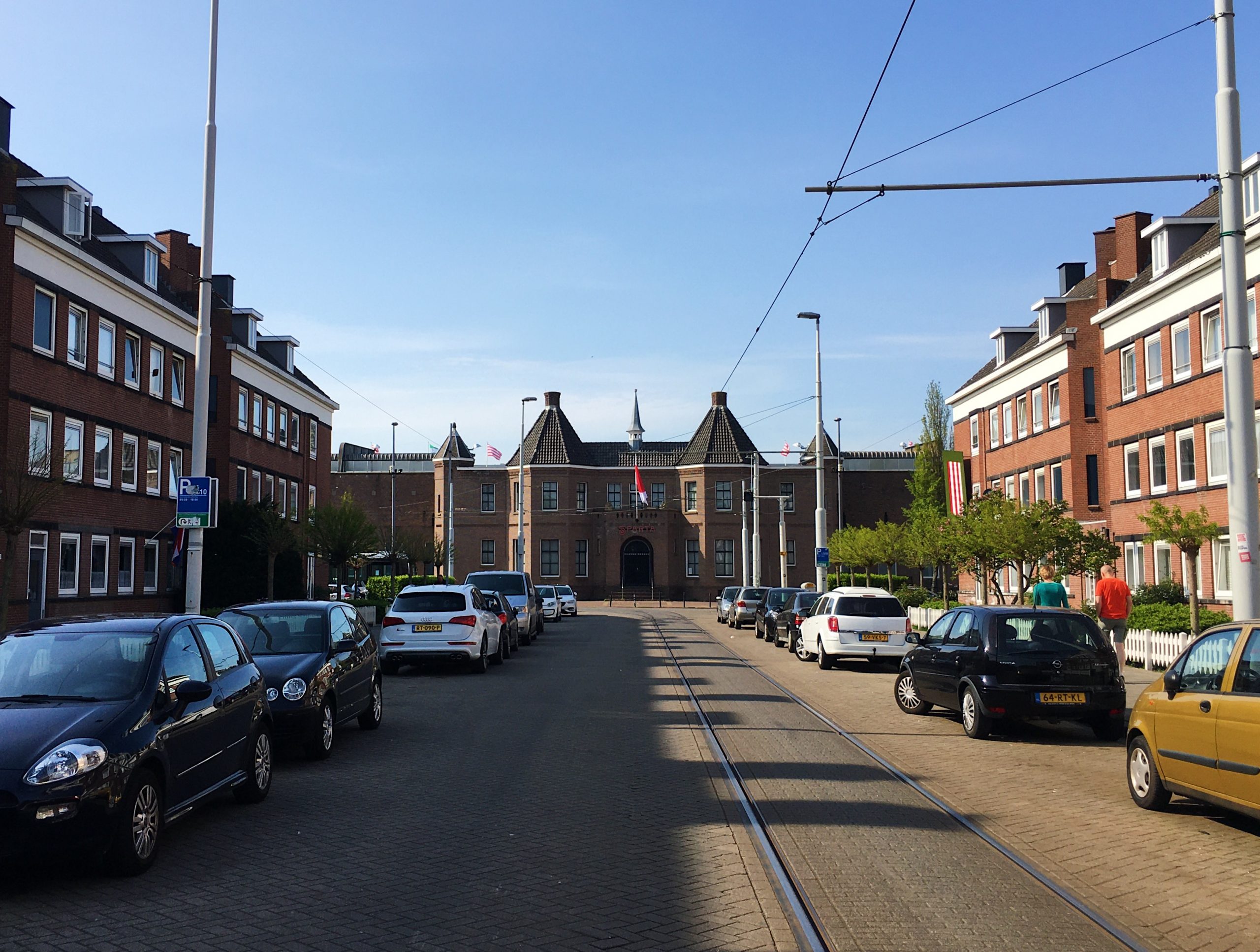Spangen
On my bike. In Rotterdam. On exploration. This time in Spangen. Spangen was built in the period between 1920 and 1940. It can be found in the western part of Rotterdam. Spangen is not really a district, tourists are urged to visit. This is because it has faced some severe problems concerning the quality of life. There was drug-tourism, dealers, prostitution, etc. This resulted in Rotterdam introducing special programs for social and physical upgrading. The restructuring project in the most deteriorated section of the district became one of the largest along the canal. Nowadays Spangen is a district where families live, and the unpopular past is left behind.
Historically Spangen is very interesting when it comes to football. The club Sparta founded in 1888 built and moved into the first club stadium of the Netherlands in 1916. The stadium can be found in Spangen. It is called ‘Het Kasteel’ (the castle). Previously, all Dutch football matches were played on ordinary fields surrounded by small grandstands. One of the most known anecdotes from Dutch football took place in Het Kasteel. Goalkeeper of the other football club of Rotterdam, Feyenoord, Eddy Treijtel killed a seagull with the football in 1970. The seagull can today be found in the museum of Feyenoord or Sparta; both claim to have the real one. In 1997 Sparta is allowed to build a new stadium and also the museum moves into the new ‘Kasteel’.
Furthermore, Spangen has one of the first public squares which stores water when heavy rains storms occur. As the district initially was a polder (land between dikes which floods when it is pouring rain) and additionally, doesn’t really have many open waters that allow the water to drain. To protect the district from waterlogging the pentagonal square has been designed.

Spangen
Op mijn fiets. In Rotterdam. Op verkenning. Dit keer in Spangen. Spangen is gebouwd in de periode tussen 1920 en 1940. Het ligt in het westen van Rotterdam. Spangen is niet echt een wijk waar toeristen naartoe verwezen worden. Dit komt omdat het te maken heeft gehad met ernstige problemen met betrekking tot de kwaliteit van leven. Er was drugstoerisme, dealers, prostitutie, etc. Dit leidde ertoe dat Rotterdam speciale programma’s introduceerde voor sociale en fysieke upgrading. Het herstructureringsproject in het meest versleten deel van de wijk werd een van de grootste projecten langs het kanaal. Tegenwoordig is Spangen een wijk waar gezinnen wonen en het onpopulaire verleden is achtergelaten.
Historisch gezien is Spangen erg interessant betreffend voetbal. De in 1888 opgerichte club Sparta bouwde en verhuisde in 1916 naar het eerste clubstadion in Nederland. Het heet ‘Het Kasteel’ en ligt in Spangen. Voorheen werden alle Nederlandse voetbalwedstrijden gespeeld op gewone velden omgeven door kleine tribunes. Een van de bekendste anekdotes uit het Nederlandse voetbal vond plaats in Het Kasteel. Doelman van de andere voetbalclub van Rotterdam, Feyenoord, Eddy Treijtel schoot in 1970 een meeuw uit de lucht. De meeuw is tegenwoordig te vinden in het museum van Feyenoord of Sparta; beiden beweren de echte te hebben. In 1997 mag Sparta een nieuw stadion bouwen en ook het museum verhuist naar het nieuwe ‘Kasteel’.
Bovendien beschikt Spangen over een van de eerste openbare pleinen waar water wordt opgeslagen als het regent. Omdat de wijk oorspronkelijk een polder was (land tussen dijken, dat overstroomt als het regent) en bovendien ook niet echt veel open water heeft, kan het water bijna niet weglopen. Om de wijk te beschermen tegen wateroverlast is het vijfhoekige plein ontworpen.



References
Mak, A., & Stouten, P. (2014). Urban Regeneration in Rotterdam: Economic and Social Values. European Spatial Research and Policy, 21(1), 101–122. https://doi.org/10.2478/esrp-2014-0008
Sparta:
Bellamyplein:

Leave a Reply